|
The Characteristics of Gold
Gold combines four basic characteristics that make it a universally treasured possession:
Beauty
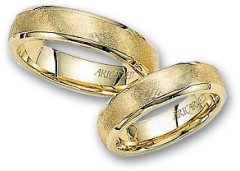 Gold's natural color can be further enhanced by alloying it with small amounts of other metals, yielding a spectrum of exquisite, subtle shades. Metalsmiths are able to create yellow, rose, green and white golds by adjusting the alloys. More copper results in a soft rose color; additional silver creates green gold; and nickel produces white. A popular trend is to combine two or more colors of gold in a single piece of jewelry. Gold's natural color can be further enhanced by alloying it with small amounts of other metals, yielding a spectrum of exquisite, subtle shades. Metalsmiths are able to create yellow, rose, green and white golds by adjusting the alloys. More copper results in a soft rose color; additional silver creates green gold; and nickel produces white. A popular trend is to combine two or more colors of gold in a single piece of jewelry.
Purity
It is estimated that only slightly more than 100,000 tons of gold have been taken from the earth during all of recorded history. And although gold can be found in rivers, seas and land in many parts of the earth, it is not easily extracted. Opening a mine is a time-consuming and costly operation, and several tons of ore are required in order to produce just one ounce of the precious metal.
Durability
Look no further than the nearest museum, where gold jewelry, coins and artifacts from ancient civilizations attest to the metal's enduring beauty and permanence.
Workability
Jewelers throughout the ages have preferred gold to all other metals for its beauty and ease of workmanship. Gold can be melted, or shaped, to create any design. It can be alloyed with a number of other metals to increase its strength and produce a variety of colors and can be re-melted and used again to create new designs.

Why Platinum?
Platinum is among the finest, purest and rarest precious metals. It has an understated elegance that appeals to both men and women.
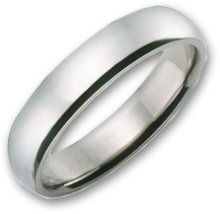 One of the strongest and most enduring of metals, it is also one of the heaviest. A piece of jewelry containing 90 percent pure platinum weighs 60 percent more than a 14-karat gold piece of similar size. Because it shows little wear, platinum is ideal for jewelry that's worn every day. It's also hypoallergenic and resists tarnish. One of the strongest and most enduring of metals, it is also one of the heaviest. A piece of jewelry containing 90 percent pure platinum weighs 60 percent more than a 14-karat gold piece of similar size. Because it shows little wear, platinum is ideal for jewelry that's worn every day. It's also hypoallergenic and resists tarnish.
Platinum has a high level of purity. In the United States, platinum jewelry generally contains anywhere from 85 to 95 percent pure platinum. By comparison, 18-karat gold is 75 percent pure gold and 14-karat gold only 58 percent pure gold.
If a piece of platinum jewelry is marked "Platinum," it contains at least 95 percent pure platinum. Jewelry with 85 to 95 percent pure platinum is marked "850 Plat." or "850 Pt.," or "950 Plat." or "950 Pt.," etc.
Jewelry containing at least 50 percent pure platinum and at least 95 percent platinum group metals (platinum, palladium, iridium, osmium, rhodium and ruthenium) is marked with the platinum content followed by the content of the other metal. For example: "600 Plat. 350 Irid." or "600 Pt. 350 Ir."
Jewelry containing less than 50 percent pure platinum content cannot be marked with the word "platinum" or any abbreviation thereof.
The staff at Medawar Jewelers can explain these platinum markings to you and assist you in selecting platinum jewelry that will bring pleasure to you and the recipient for years to come.

Silver - Defining the Elements
Silver is an element that occurs naturally in the earth and is generally considered too soft in its pure form for practical use in jewelry, giftware or flatware. An alloy such as copper is usually added to make silver workable for jewelry.
Sterling Silver
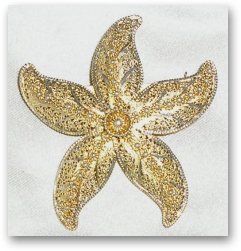 Sterling silver is 92.5 percent (925 parts) pure silver and 7.5 percent (75 parts) alloy metal. Sterling is the primary material used for silver jewelry, giftware, holloware and flatware. Sterling silver is 92.5 percent (925 parts) pure silver and 7.5 percent (75 parts) alloy metal. Sterling is the primary material used for silver jewelry, giftware, holloware and flatware.
Coin Silver
Coin silver is 90 percent (900 parts) pure silver and 10 percent (100 parts) alloy metal. As its name implies, coin silver was used to produce U.S. currency during the 19th century. It is no longer a commonly used material.
Vermeil
Pronounced "vermay," vermeil is a French word describing sterling silver that has been electroplated with at least 100 millionths of an inch of karat gold.
Flatware
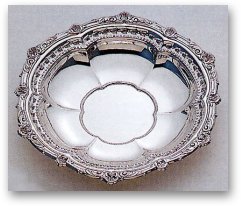 Silver knives, forks, spoons and various serving utensils are commonly referred to by this term. Silver knives, forks, spoons and various serving utensils are commonly referred to by this term.
Holloware
Silver tableware that is larger than flatware and is designed to function as containers and decorative pieces. This category includes bowls, vases, serving dishes, trays and candlesticks.
Giftware
Decorative and functional objects such as picture frames, desk accessories, key rings and vanity items.
|
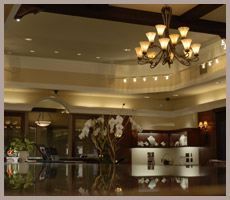
 Gold's natural color can be further enhanced by alloying it with small amounts of other metals, yielding a spectrum of exquisite, subtle shades. Metalsmiths are able to create yellow, rose, green and white golds by adjusting the alloys. More copper results in a soft rose color; additional silver creates green gold; and nickel produces white. A popular trend is to combine two or more colors of gold in a single piece of jewelry.
Gold's natural color can be further enhanced by alloying it with small amounts of other metals, yielding a spectrum of exquisite, subtle shades. Metalsmiths are able to create yellow, rose, green and white golds by adjusting the alloys. More copper results in a soft rose color; additional silver creates green gold; and nickel produces white. A popular trend is to combine two or more colors of gold in a single piece of jewelry. One of the strongest and most enduring of metals, it is also one of the heaviest. A piece of jewelry containing 90 percent pure platinum weighs 60 percent more than a 14-karat gold piece of similar size. Because it shows little wear, platinum is ideal for jewelry that's worn every day. It's also hypoallergenic and resists tarnish.
One of the strongest and most enduring of metals, it is also one of the heaviest. A piece of jewelry containing 90 percent pure platinum weighs 60 percent more than a 14-karat gold piece of similar size. Because it shows little wear, platinum is ideal for jewelry that's worn every day. It's also hypoallergenic and resists tarnish.
 Sterling silver is 92.5 percent (925 parts) pure silver and 7.5 percent (75 parts) alloy metal. Sterling is the primary material used for silver jewelry, giftware, holloware and flatware.
Sterling silver is 92.5 percent (925 parts) pure silver and 7.5 percent (75 parts) alloy metal. Sterling is the primary material used for silver jewelry, giftware, holloware and flatware.
 Silver knives, forks, spoons and various serving utensils are commonly referred to by this term.
Silver knives, forks, spoons and various serving utensils are commonly referred to by this term.